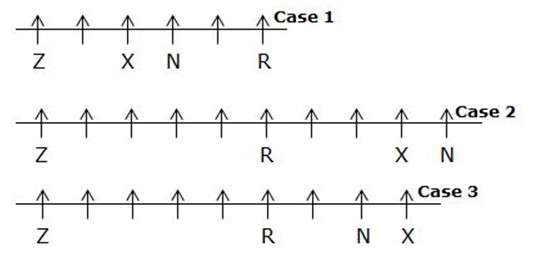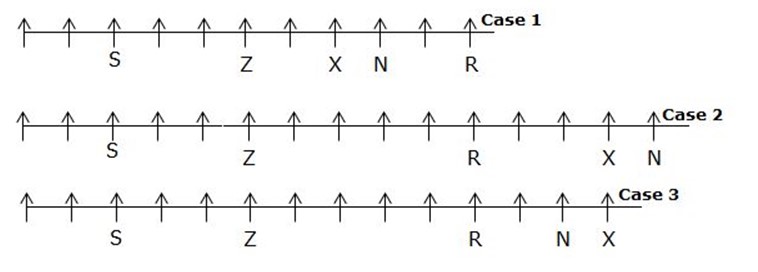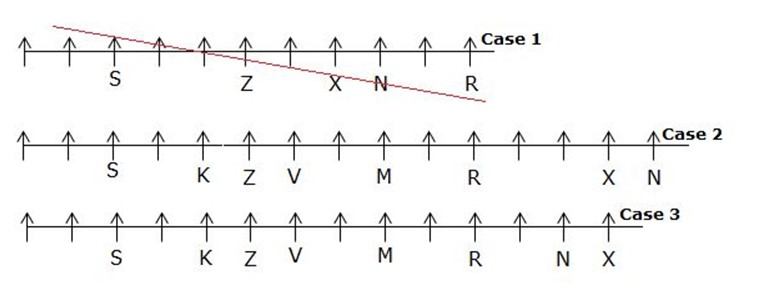Question
How many persons sit between X and Q?
Study the following information carefully and answer the below questions. Certain numbers of people are sitting in a row facing north. X and N are immediate neighbors of each other. Only two persons sit between X and R. R sits fifth to the right of Z, who is not an immediate neighbor of N. There are no seats to the right of Q. S sits third to the left of Z and is third from one of the extreme ends of the line. V sits second to the right of K and is an immediate neighbor of Z. M sits exactly between R and V. More than three persons sit between M and N, who sits third to the left of Q.Solution
X and N are immediate neighbors of each other. Only two persons sit between X and R. R sits fifth to the right of Z, who is not an immediate neighbor of N.  S sits third to the left of Z and is third from one of the extreme ends of the line.
S sits third to the left of Z and is third from one of the extreme ends of the line.  V sits second to the right of K and is an immediate neighbor of Z. M sits exactly between R and V. Here Case 1 gets eliminated.
V sits second to the right of K and is an immediate neighbor of Z. M sits exactly between R and V. Here Case 1 gets eliminated.  More than three persons sit between M and N, who sits third to the left of Q. There are no seats to the right of Q. Here, Case 3 gets eliminated and hence the final arrangement is,
More than three persons sit between M and N, who sits third to the left of Q. There are no seats to the right of Q. Here, Case 3 gets eliminated and hence the final arrangement is, 
What is the outer layer of a dental crown called?
What does histology study?
Which one of the following amino acids is present in foods rich in proteins?
Which among the following disease is not caused by Protozoa ?
__________ is an oil yielding plant.
The 'ELISA' test is used to diagnose which of the following?
Who among the following can terminate the term of the Governor of a state?
Which of the following is used for measuring the rate of transpiration?
Pneumatic bones are characteristic of which class of vertebrates?
Dinosaurs are classified as which type of creatures?
Relevant for Exams:


